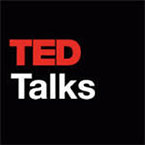When I heard last Friday, the 28th of October, that Susan Lindquist had died at 67, I did not believe it. I hadn’t known Susan for long. But I vividly remember our meetings over dinner—at an Indonesian restaurant in Amsterdam in 2014 and again in Boston in 2015—together with her husband Edward Buckbee, a linguïst and expert in French medieval literature. Both dinners were very memorable, with our conversation focusing on culture on both sides of the ocean and having daughters. I was extremely impressed by her quick mind and the way she spoke—softly but very determined. She was outspoken in an extremely non-threatening way. I looked forward to years of scientific discourse and a growing friendship. I had just lost a friend in Boston and I was looking for a new one. My close friend Norm Letvin had died in 2012, leaving a void in that city—a void I’ve felt particularly since I recently joined the faculty of Harvard and am planning to be in Boston a lot more often. Susan has been taken away much too early, and I say that for much more than selfish reasons.
The first time I sat in her office at the Whitehead Institute in Cambridge, Massachusetts, we had a long conversation about what prions are and what prions are not. My way of thinking was defined by my training as a microbiologist and heavily influenced by my fellowship in the lab of D. Carleton Gajdusek in the late 70s and the early 80s. For me, a prion was an infectious agent consisting of aggregated protein that could be transmitted man-to-man, animal-to-man and animal-to-animal. A prion was always bad for you and killed you within months. Diseases like Creutzfeldt-Jakob disease or kuru could be transmitted to experimental animals, resulting in the typical spongiform changes, and the initiated diseases could be passed on to another animal, over and over again. I had shown in Gajdusek’s lab that a disease like Alzheimer’s disease could not be transmitted to experimental animals and was therefore not caused by a prion. But Susan Lindquist thought differently.
Susan argued that Creutzfeldt-Jakob disease (CJD) was only rarely caused by an infection, for example the cases caused by contaminated growth hormone, contaminated surgical instruments or eating an infected steak. In by far the most cases, the disease occurred sporadically, out of the blue. But the spongiform changes in the brain were the same in infectious CJD and sporadic CJD. So, according to Susan, a prion could be both infectious and non-infectious, dependent on a change in the brain only and exclusively, but still causing pathology. I argued that whatever had started the case of sporadic CJD, brain tissue from such a patient was able to transmit the disease. In Alzheimer’s disease, the spreading of the aggregated and misfolded proteins involved, beta-amyloid and tau, occurs only in the brain. She argued that this misfolded protein was the basis of a prion and I argued that it was only half of a prion—prion-like, but not quite a prion. Unfortunately, we did not get the chance to resolve our disagreement; I would have loved to do so by doing experiments together.
In a seminal paper, published in Nature in 2012, Susan Lindquist showed that about one-third of all strains of wild yeast contained aggregated misfolded proteins—which she called prions—and apparently these new conformations of a protein conferred particular traits, some of which were very beneficial to the yeast. In the paper she describes a strain of yeast isolated from white wine that was resistant to acid and to the antifungal agent fluconazole, and another yeast strain isolated from Lambrusco grapes that was resistant to a DNA-damaging agent. When the aggregated and misfolded proteins were removed, the useful traits were gone. Remarkably, she showed that these traits were not only conferred by the aggregated misfolded protein but were also inheritable without the interference of DNA or RNA. And that is very prion-like, I would say.
Susan promoted the idea that prion-like behavior of a protein might benefit an organism just as it might be harmful in other cases. And even more daringly, she argued that these beneficial traits are inherited and have evolutionary impact. She tested one of her most audacious ideas in experiments performed and published together with the Nobel laureate Eric Kandel. The paper, entitled ‘A neuronal isoform of the Aplysia CPEB has prion-like properties’, appeared in Cell in 2003. Susan Lindquist based her ideas on the prion-redux or prion-like definition published by Reed Wickner in 1994. He called a prion a self-perpetuating and self-templating protein state that is characterized by nucleation, aggregation, misfolding of the protein that is heritable without any DNA or RNA being involved. Apparently, this does not include spreading within a preferred body site (as the protein aggregates of amyloid beta and tau do in brains affected by Alzheimer’s disease), let alone infection (as in the spongiform encephalopathies).
Susan showed just that in 1996 in a paper published in Science with the revealing title ‘Support for the prion hypothesis for inheritance for a phenotypic trait in yeast’. A soluble protein, Sup35, transitions to an aggregated stable state that self-propagates by the transmission of those propagated aggregates from mother cells to their offspring. Susan’s collaboration with Eric Kandel concerned a protein, CPEB, that is involved in maintaining synapses and therefore is considered important for memory and learning. This protein apparently sustains itself in an altered, self-perpetuating conformation constituting the active state of the protein involved in so-called ‘molecular or cellular memory’. So the prion concept of Susan Lindquist is completely different from that of D. Carleton Gajdusek and to some extent also from that of Stan Prusiner, because they concerned themselves with protein aggregates transmissible by infected tissues to genetically unaltered, normal, mammalian species ranging from mice to man and causing a deadly spongiform brain disease. That was and is what they called prions and for which they won the Nobel Prize. And again Susan looked at the concept differently and much less restrictively.
In December 2011 Susan Lindquist was interviewed in PNAS by Prashant Nair. The exchange encapsulates Susan’s way of thinking and reasoning about prions:
PNAS: So the prion functions as a switch that can sometimes benefit the organism?
Lindquist: Yes, we now know there are lots of these prions; and flipping on the switch to a prion state can turn the function of the protein on or off and potentially provide yeast cells with novel heritable traits.
PNAS: Now the million-dollar question: What triggers the switch?
Lindquist: That may be the best part. Prions are fundamentally a protein folding problem. Every once and a while, cells might switch some of their proteins into and out of the prion state, just out of happenstance. We call this a “bet-hedging” strategy; but stress and unfavorable environments cause protein folding problems and increase the frequency of that switch. It’s an illustration of environmental change altering the pace of evolution. It’s very Lamarckian: Heritable traits arise as adaptations before they are hardwired into the genome.
This is how audacious Susan’s thinking was and how willing she was to put her own ideas to the test, to do the experiments that were needed to substantiate her claims. The scientific community will miss this great scientist dearly.




